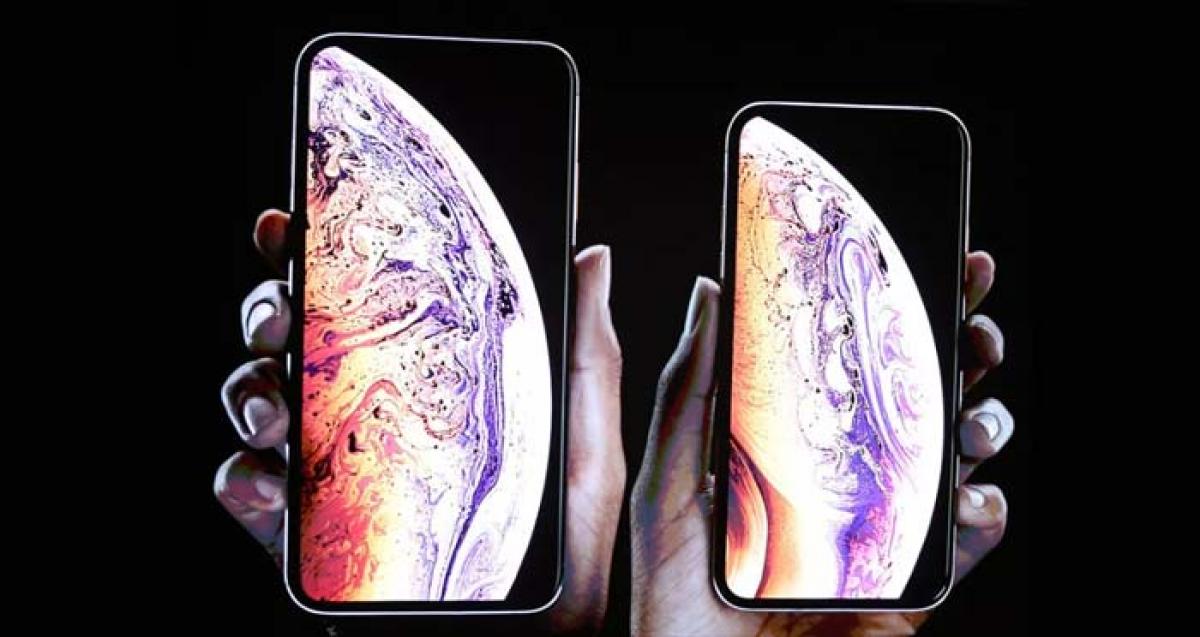iPhone XS and 6.5-inch XS Max announced

Apple has announced its next generation of iPhones, and one of them is by far the biggest iPhone yet The two new models are called the iPhone XS and iPhone XS Max
Apple has announced its next generation of iPhones, and one of them is by far the biggest iPhone yet. The two new models are called the iPhone XS and iPhone XS Max. They look almost identical to their predecessor, but there are two immediate differences: for one, they’re both available in gold, unlike last year; and more importantly, the XS Max is huge. It’s not just the biggest iPhone ever, it’s one of the biggest phones out there, period.
In addition to the iPhone XS and XS Max, Apple also announced a lower-cost model that splits the difference in size, called the iPhone XR. You can read more about that in our other article — we’re going to focus on Apple’s two new flagships, the XS and XS Max, below.
As with other -S years, this year’s iPhones are mostly defined by spec upgrades. That includes a display with better dynamic range, wider stereo sound from the speakers, and speed increases to Face ID. Water resistance has been improved on both models. And the processor is getting a big boost as well, using Apple’s newly unveiled A12 Bionic processor, a six-core chip that’s among the first in the industry to use a 7nm process. Tim Cook called the devices “by far the most advanced iPhone we have ever created.”
But the real news this year is the introduction of the “Max” model, which has a huge 6.5-inch screen. That’s far bigger than the iPhone 8 Plus (5.5 inches) and bigger even than the Galaxy Note 9 (6.4 inches). It’s not as though Apple is jumping into unprecedented territory here, but it is leaping into a size class that, even in a world of large phones, is still considered fairly large. It’s an admission that large phones will continue to rule. And while it may have taken Apple a bit too long to catch on in years past, it’s happily jumping into the six-plus-inch fray as phones get ever larger.
Because the iPhone XS and XS Max have a wider screen ratio than the traditional iPhone, neither phone will be quite as big as it sounds. The iPhone XS, for instance, which has the same 5.8-inch screen size as the iPhone X, is actually smaller than the 5.5-inch iPhone 8 Plus. The XS Max is definitively larger than the other iPhones that came before it, but keep in mind that its extra screen size will come more from height than from additional width. That means it shouldn’t be much harder to hold than any Plus-sized iPhone.
Apple also says that the XS and XS Max feature an all-new camera system, though the specs seem largely the same on a high level. The wide angle and telephoto rear cameras both still have 12-megapixel sensors with optical image stabilization; but the wide angle camera now uses a new sensor with larger pixels, and the telephoto includes a wider aperture, so both cameras should do better in low light. The selfie camera on the front is supposed to be faster as well, but aperture and megapixel count haven’t changed.
The bigger upgrade may be to the way these cameras take photos. Apple is introducing a new method called “Smart HDR” that sounds very similar to what Google does with the Pixel — it takes many photos and stitches them together into one properly captured image. That’s not altogether different than the HDR methods that Apple has used in the past, but this year’s sounds like it’s just doing more of all that. Which, if it works, is great. And for Google, it’s definitely works.
Apple is also adding more options to its cameras’ portrait mode, which automatically isolates a subject and blurs out the background. You can now fine-tune those photos even more, adjusting exactly how blurred the background is, which could let you make the effect a bit subtler.
There’s another new feature that many people won’t notice, but could be make-or-break for buyers in some countries: dual SIM support. Both phones will support the use of two phone numbers and data plans, using a single physical SIM card and Apple’s integrated eSIM. That means carriers will need to add support for the eSIM in order for this to work (and many have been reluctant to); but it’s still a big addition, since Apple has never offered this before.
This feature won’t be available at launch, however. Apple says it’ll be enabled in a software update “later this fall.” And in China, where the eSIM isn’t allowed for some reason, Apple will instead ship a special version of the XS Max that includes two physical SIM trays.
Both phones are going to see improved battery life, with the XS getting an estimated 30 additional minutes and the XS Max getting an additional hour and a half. They’ll also each support gigabit LTE speeds.
The phones will both come in three capacities: 64GB, 256GB, and 512GB. Those first two tiers are the same as last year, but 512GB is a new one for Apple. It’s not the first company to hit that incredible storage point in a smartphone, but it’s still relatively quick to get there. The 64GB configuration of the XS will sell for $999, the same as the iPhone X, and the 64GB XS Max will sell for $1,099. Preorders start Friday, with the phones shipping out September 21st.
The last time Apple introduced a new size of the iPhone was in 2014, when the iPhone 6 and 6 Plus launched. Both models represented new sizes for Apple, which had spent the prior two years making phones with four-inch screens. As Apple stuck by its small phones, the door opened for Android competitors, which grew in size and popularity. That’s continued to happen, and Apple has generally kept up with the trend. With today’s announcement, it may even surpass it, planting a definitely large stake in a large phone world.













